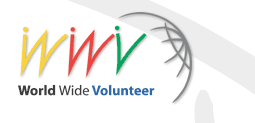Susan J. Ellis, President, Energize, Inc.
© 2003, Energize, Inc.
Sometimes it's hard to remember that the first Web site was only introduced in 1991-just think about what has happened in twelve short years! In just over a decade, computers have exploded in capacity, grown smaller in size, and come down in price. E-mail has transformed modern communication in as critical a way as did the telephone a century before. In developed countries, it is almost inconceivable to be without at least one e-mail address, while nonprofits and business without a Web site are quickly becoming invisible to their consumers. At the same time, the proliferation of cell/mobile phones and new availability of wireless Internet connections are removing the obstacle of requiring a physical telecommunication infrastructure.
The "digital divide" is real, but it's narrowing. Advocates for universal access to electronic communication have succeeded in making the point that the "haves" must accommodate the "have nots." Already there are free e-mail providers and a growing number of public computer sites, even in developing countries. It is in this effort towards accessibility that volunteers are particularly active.
It is important to note how instrumental volunteers have been to the development of the World Wide Web itself. From the free sharing of the Linux program, to voluntary moderating of online discussion groups, to donating Web design services, private citizens make a daily difference in global exchange.
Projects to Connect the World
Hundreds of projects have been implemented and are still underway in which volunteers make a difference in bridging the digital divide. Here is a list of only a few, all of which are active in both developed and developing countries:
This type of volunteer service is occurring both through formal programs and institutions as well as by individual action. And, of course, the Web allows organizers to publicize their efforts and recruit volunteers, both for on-site and electronic work.
Virtual Volunteering
The Web has enabled the only truly new form of volunteer service in memory: "virtual volunteering," or online service done by real volunteers via their computers and an Internet connection. Virtual volunteering has been discussed at length in many other places, but here is a summary of just some of the ways service can be done online:
- As an extension of real-world service, such as additional "visiting" online with a client seen face-to-face once a week, submitting of electronic reports on volunteer activities, etc.
- Online training, communication, and exchange among volunteers and program managers
- Research projects done online, especially Web surfing and linking
- Acting as a "cyber deputy" for organization staff and officers, monitoring and guiding their Web interactions, dealing with e-mail, etc.
Anything requiring working with documents that can be exchanged electronically, including writing, translating, editing, illustrating, and other input
- Beta testing software and Web processes
- Web site management, updating and promotion
- Digital photography projects
- Online surveying and data gathering
- Moderating of listservs and other discussion/newsgroups
- Project planning with input from people anywhere in the world
- One-to-one consulting and technical assistance via e-mail (professional issues)
- One-to-one mentoring and support via e-mail (personal connections)
- Participation in self-help groups
In addition, the Web has allowed cause-driven activists to engage in public education, lobbying, mobilizing for action, and other political activities in ways that were inconceivable (and unaffordable) even a decade ago. (See my article, "Online Power for Volunteer Action," for more details on this phenomenon.)
What's especially important, in terms of the "digital divide," is that virtual volunteering opens doors to participation for a very diverse audience. Geographical isolation is no longer an issue and people in rural areas or just very far away can participate fully in cyberspace. International exchange is therefore encouraged, especially since the Internet permits asynchronous communication in which volunteers can do their work at the time most convenient to them. The deaf have an equal playing ground online, as do people with other forms of physical limitations that become extraneous when working electronically. Eventually, streaming video will allow even more interaction, particularly for those with poor reading, writing or typing skills.
One-by-One
In the long run, the most powerful capability of the Internet is to connect individuals, joined only by a common cause and not defeated by physical separation. Yes, language and literacy are serious obstacles. But e-mail lets people reach out to one another, across all sorts of political and jurisdictional boundaries. As long as those with the knowledge and access are eager to help those who do not, progress will be made. This is a new frontier in every way, and volunteers are right in the center of it all.
____________________________
Susan J. Ellis is president of Energize, Inc., an international training, consulting and publishing firm specializing in volunteerism. Based in Philadelphia (USA), the 26-year- old firm has helped a wide diversity of clients across North America, Europe, Latin America, Asia, and Australia to start or expand volunteer efforts. Ellis has written 11 books on volunteerism and over ninety articles. For 13 years she has written the "On Volunteers" column for the American national publication, The NonProfit Times. She is co-publisher of the international online journal, e-Volunteerism (www.e-volunteerism.com). Browse the 1200+ pages of free volunteer management information on the Energize Web site: http://www.energizeinc.com
© 2003, Energize, Inc.
Permission given to post and reprint for the Conference on Volunteering and Information and Communication Technologies (ICTs), Geneva, December 2003








